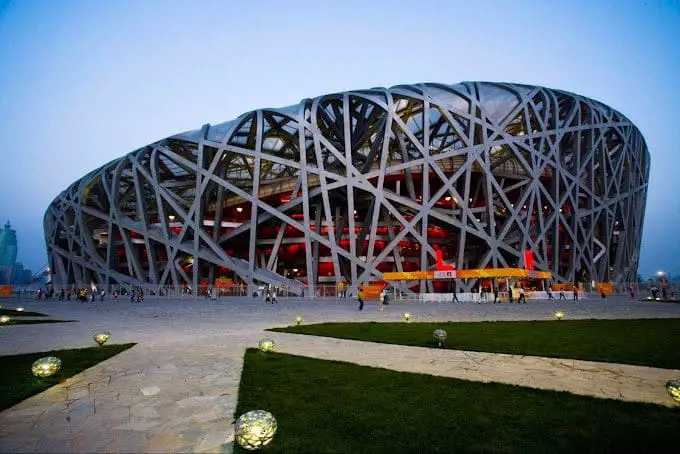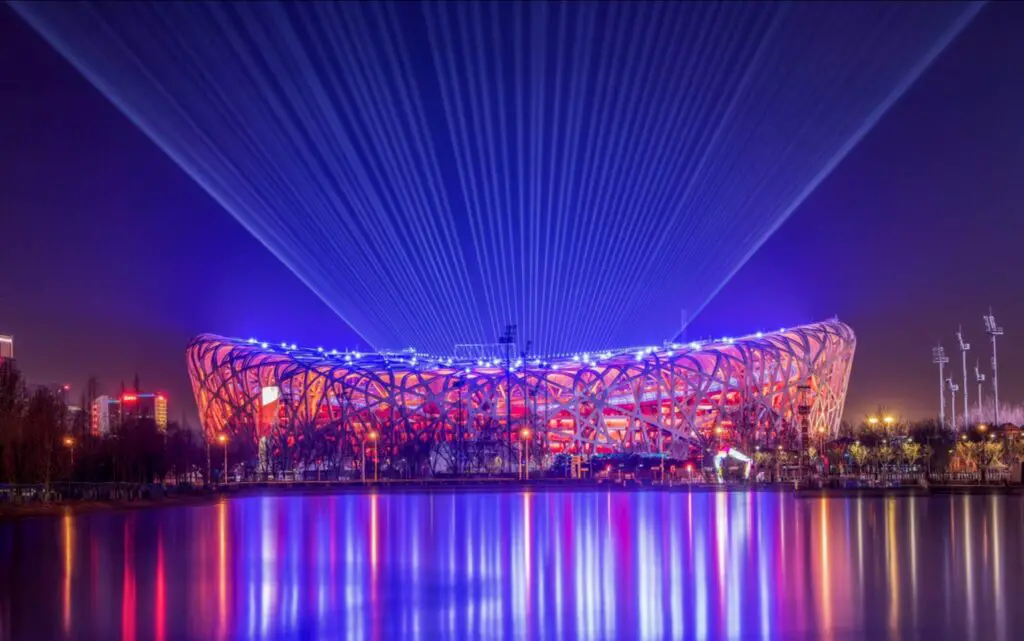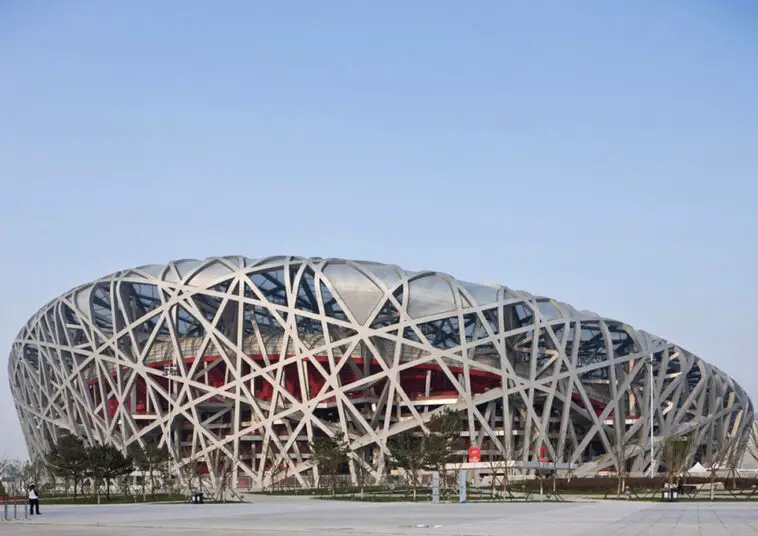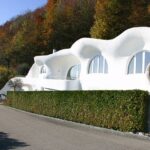The Bird’s Nest: An Icon of Deconstructivist Architecture in Beijing
In the heart of Beijing, China, stands a marvel of modern architecture and engineering that has captivated the world since its completion in 2008, The National Stadium. The “Bird’s Nest” stands in Beijing’s heart. This structure has captivated global attention since its completion in 2008. The stadium represents a collaborative vision between renowned architects Herzog & de Meuron, along with Li Xinggang, testifying to contemporary design’s innovation symbol.
March 2003 initiated the construction timeline for this architectural masterpiece, culminating in a grand opening on June 28, 2008. The building not only impresses upon the cityscape an indelible mark but also stands as testimony to China’s competence in hosting major global events. In this article, we delve into Bird’s Nest with meticulous detail: its design, cost, purpose, and overall significance within architecture and sports worldwide emerge under scrutiny.

Herzog & de Meuron, the renowned architectural firm in collaboration with Li Xinggang, designed The Bird’s Nest to exemplify the deconstructivist architectural style, frequently defying traditional norms. Its intricate lattice, like steel exterior, resembling a massive and interconnected bird’s nest– challenges conventional notions of structure and form, hence its nickname.
Meticulously, the architects designed a stadium to seat over 80,000 spectators; they aimed to provide an exceptional viewing experience for all. Featuring an open and airy design, it allows maximum natural light to flood the space and offers unobstructed views of all action within. The unique exterior facade of the stadium serves as a testament: its lattice structure is not just aesthetically pleasing but also embodies sustainability. It enables efficient material use while incorporating rainwater collection systems.
At an estimated budget of $500 million, the construction of the Bird’s Nest represented a substantial investment. This significant financial commitment mirrored not only its innovative design but also demonstrated the stadium’s ability to host large-scale international events; most notably among these was the Beijing Olympics in 2008. Commencing in March 2003, The project reached completion after five years with a grand opening on June 28, marking an epochal moment within modern Chinese architecture.

A complex feat of engineering and project management characterized the construction process. The unique design of the stadium posed several challenges, especially in terms of assembling its intricate steel lattice. Working closely with a team of skilled engineers and construction professionals, architects actualized their vision. A stadium emerged as the culmination of architectural innovation, not only meeting international standards but also establishing a new benchmark.
As a stadium, the Bird’s Nest hosts various sporting events, concerts and other large-scale gatherings. Its iconic design attracts international events and cultural performances; thus, it ascends as a symbol representing modern China. With adaptable seating arrangements and state-of-the-art facilities, the stadium has successfully accommodated diverse events, from the 2008 Summer Olympics to international soccer matches and athletics competitions – even accommodating concerts by world-renowned artists.
The Bird’s Nest: a testament to China’s unyielding commitment towards sporting excellence; an ambitious display of its global capabilities. This architectural marvel, playing a crucial role in reshaping Beijing’s skyline, establishes the city as not only an innovative architectural hub but also a home base for major international events.
As exemplified by Bird’s Nest, the deconstructivist approach accentuates a crucial pivot: breaking with tradition and stretching architectural design’s boundaries of possibility. It fosters an environment where architects are encouraged to think creatively and welcome unconventional concepts; this ultimately yields structures that captivate visually as much as they serve functionally. The Bird’s Nest, with its intricate steel latticework juxtaposed against an open interior, incarnates these principles, giving us a renewed viewpoint on architecture’s potentiality.
Daily, from 9:00 AM to 6:00 PM, the Bird’s Nest welcomes visitors. Situated at 1 Guojiatiyuchang S Rd in Chaoyang, Beijing, China – this iconic stadium offers easy accessibility for tourists and architecture enthusiasts. Do not hesitate to contact the stadium administration at +86 10 8437 3008 for inquiries or additional information.
The avant-garde deconstructivist design of The Bird’s Nest: a testament to architectural innovation and creativity, stands powerfully. Its construction, representing a historic moment in modern Chinese architecture, established Beijing as a hub for major international events upon its grand opening.
Further Information On National Stadium
Date Construction Started: March 2003
Date Opened: 28 June 2008
Cost Of Building: $500million
Architect: Ai Weiwei, Pierre de Meuron, Jacques Herzog, and Li Xinggang.
Architectural Style: Deconstructivism
Size Or Floor Area: 72,046 m2
Height: 69 metres
Function Or Purpose: Stadium
Address: 1 Guojiatiyuchang S Rd, Chaoyang, China, 100101
Phone Number: +86 10 8437 3008
Opening Hours: 9:00 to 18:00 Daily
Website: N/A




